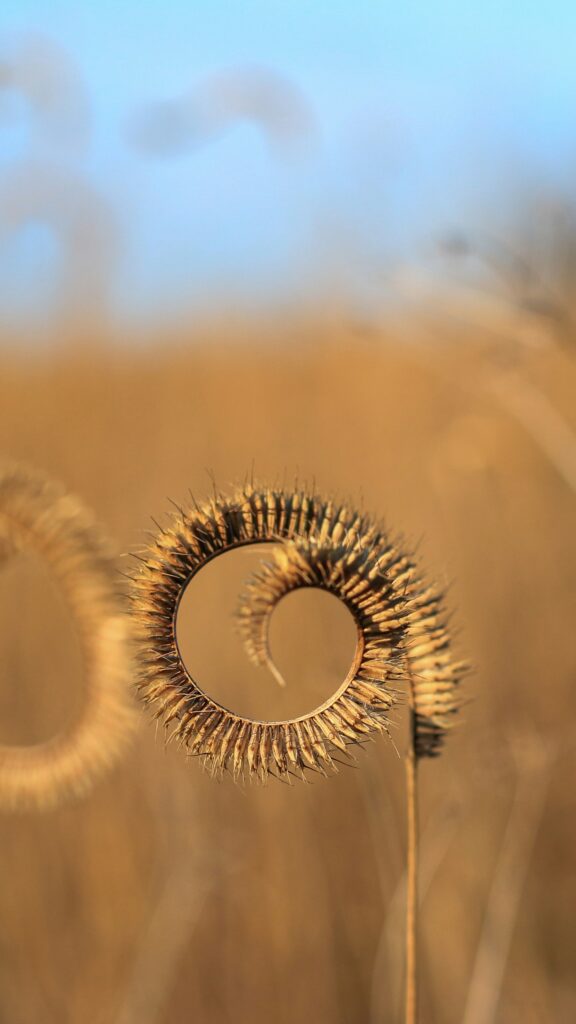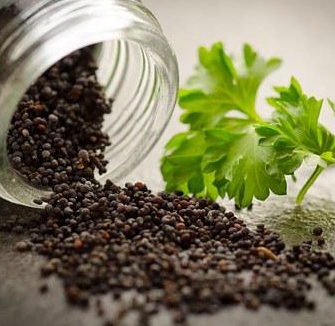
The relationship between plants and humans for the purpose of healing and wellness is as ancient as our very species and a knowing that is within our very being.
It is a common feeling among those who approach the path of healing themselves with herbalism or food that it feels as though they are remembering something that has been long forgotten to the folds of time. It is as though by engaging in this practice, we are re-awakening, and reconnecting to something deep within ourselves.
In her gorgeous book, The Land in Our Bones, author and herbalist Layla K. Feghali describes the concept of “Plantcestors.” She describes herbs as being part of our family and cultural lineages, a connection to our sense of belonging, and a tie to our most intimate relationship to our homelands. In this way, plants themselves are ancestors just as much as human ones, and by working with them, we have the ability to re-member that which has been lost to time, especially if our ancestral lineages are impacted by trauma and colonialism. She states that, “Our ancestral plants know us so intimately in fact their mere presence in our lives can retrieve parts of us so deeply buried we do not even know they are amiss. They record the taken and untold memories of our ancestors and their embedded wisdoms too, because they are part of the source that created and inspired them since the beginning of time.”
In our modern day and modern methods of healing, we often do not take the time to think about the ancestors of medicine. We often do not make space for them either, dismissing that which is older to be not useful or irrelevant in our modern environment.

And yet – when we come back to the plants, why is it that we often get this common feeling that this is a relationship we have always longed for in our life? Why is it that something as simple as sipping an herbal tea, or even spending time wildcrafting with reverence can feel so joyful, or even spiritual?
This is because the plants have always been with us. They are our most ancient forms of medicine, our first connections to spirit acting as conduits and gatekeepers, they are our first foods, and because they are embedded in our most ancient parts of ourselves.
Join us as we explore the traditional method of healing known as the Wise Woman Tradition.
A Note on Modern Western Medicine
As we explore more traditional methods of healing, it is always important for us to hold space for two things to be true at the same time. This is the case when approaching healing. While it is a reality that in our modern times we have grown to find comfort in convenience and quick-fixes, it can also be said that there can be other options for addressing our ailments other than solely using pharmaceuticals. We can hold space for the idea that such practices as breathwork and gathering with community can also act in medicinal ways. And yet, we can also hold space for the incredible advancements that have been made in our modern medical system, discovering cures and procedures our ancestors could never have fathomed.
As we explore what are deemed today as “alternative” methods of healing, we can also acknowledge, with an open heart, that ancestral wisdom and modern science do not have to exclude one another, or that we have to choose one path over the other. Instead we can see them as a beautiful dance, one complementing the other. Through this approach we actually find our own empowerment, taking charge of our own healing and can better understand and know ourselves and our own unique needs. There is absolutely more room at the table for plants and traditional approaches, and there are also absolutely times when Western modern medicine is the right answer as well.

The Wise Woman Tradition of Healing
“Plants have enough spirit to transform our limited vision.” – Rosemary Gladstar
You very likely do not have to go back very far to find an herbalist in your family lineage. The practice of herbal healing was one that was of the very essence of community. While healers took on all various types of forms, we can find peace in knowing that the art of working with the plants is one that began to be lost to the folds of time only very recently, and really only as a symptom of moving into our modern industrial era.
Plants were allies of the traditional healers of our communities, including midwives, spiritual leaders, what we would come to understand today as doctors, and even includes our grandmothers (there is a reason it is a common theme that many of us have a “secret family recipe” that would be given to us when we felt ill, whether it is a comforting soup, a special herbal tea, or even the practice of rubbing a soothing oil on our chest or feet).

The term Wise Woman Tradition of Healing is a nod to this ancestral way of knowing, it is a term that gives name to something that has always been present, and is a practice and tradition prevalent in all lineages. This tradition does not solely belong to one person, but instead is a way in which to describe the form of healing that is of the people. It is a term that describes the tradition that has long been held by the old ones, the midwives, the community tenders throughout the mists of time. This refers to the approach to medicine that is deeply ancient, and rooted in reciprocal and loving relationship to the land. It is a form of medicine that makes space for that which is seen and unseen, understanding that healing isn’t always linear, but acts in more of a spiral, or can move with fluidity like the tides of the ocean. It is the term that helps us to define what it means to be holistic in our approach, recognizing that symptoms are part of a bigger story, and we must instead seek to understand that mind, body, and spirit are intimately interconnected and our solutions cannot only address one aspect of Self.
How to Incorporate the Wise Woman Tradition of Healing
The Wise Woman Tradition of healing is rooted in the idea that we ourselves are our best healer, and Nature our greatest teacher. Differing from other traditions of healing that rely on machines as our solution for ailments, or depend on a specific person or practitioner, this path instead focuses on wholeness. It begins with nourishment, and works in relationship with death and disease as opposed to many modern perspectives where disease and death are to be feared, and our greatest enemy. Herbalist and author Marysia Miernowska in her book, The Witch´s Herbal Apothecary states this beautifully, ¨The wise woman’s role is to support transformation in whatever form it takes, including death and disease… They are seen as vehicles of transformation, messengers, teachers, and at times, great allies. We are constantly rebirthing ourselves, recreating our world on both a cellular and spiritual level. There is power and grace in knowing, honoring, and moving within all of the cycles of nature.¨
In this tradition we hold space for all that is gray. It acknowledges that there is medicine in the mystery as well as the tangible, and encourages us to let go of rigid absolutes. What is best for one person may not be best for another, and it celebrates all that makes us unique. This tradition embraces the wisdom that healing itself is never linear, and with that we learn so much about ourselves and our interconnectedness to all that is. While there is an honoring of the sacredness of the feminine and the mystic therewithin, it does not exclude any gender, and instead emphasizes the criticality of community – that of humans and that of nature – and the healing that comes from being in loving relationship and support of one another.
If this is an approach that you feel called to, perhaps you are wondering how you might go about incorporating these principles into your everyday life?

Begin with Nourishment. Our root is our sense of safety, and of belonging. It is from here we must nourish to feel grounded and whole. The Wise Woman Tradition often finds that lack of nourishment is the root cause of so many ailments we experience. While nourishing ourselves nutritionally is key, nourishment also takes on many different forms, including making sure we are making time for rest, tending to our social needs, tending to our mind and spirit, feeding our creative flow, strengthening our relationship with nature, and more. This will be unique to you, and making a regular practice of asking yourself what you feel needs to be nourished within you is a great way to incorporate the Wise Woman Tradition into your life.
Build a Relationship with Your Plantcestors. In today’s modern world we have an abundance of information. We may learn of superfoods or plants that are marketed to us as being the answer to all of our needs that often come from far away lands, and unfortunately are usually overharvested or stripped of the relationship with the people who traditionally steward and tend them. All of us have Plantcestors, or plants that people of our family and cultural lineage shared deep and intimate relationships. A great place to start is the “wild weeds” – the nourishing plants that are abundant, available on essentially every continent and corner of the world, and have long been used by almost every lineage. These include plants like Dandelion, Nettle, Burdock, Red Clover, Chickweed, Purslane, or Mallow. As you go deeper, ask yourself what plants your ancestors would have been in relationship with, and reconnect with them.
Hold Space for Both/And. Our modern society tends to romanticize absolutes. This has been compounded by social media, or algorithms that allow us to surround ourselves only by those who share a similar line of thinking. It’s also science – our brain likes to categorize things as one thing or another. However, in the Wise Woman Tradition, we can make space for multiple things to be true at once. We may very well need to use a prescription but can also use herbs at the same time. We may have deeply believed something for a long period of time, but with the availability of new information, find that our perspective has changed. We can hold space for both science and traditional wisdom. The symbol of this tradition is the spiral, always calling us to go deeper.
Thank you for joining us in this exploration of this tradition of healing. We hope you found it inspirational and perhaps opened new pathways within you and your relationship to your own healing. Perhaps you feel called to continue to scratch beneath the surface and go deeper. We send you love on your journey, and we wish you a beautiful rest of your May.
Sources:
Feghali, Layla K. 2024. The Land in Our Bones: Plantcestral Healing and Healing Cultures from Syria to the Sinai. North Atlantic Books.
Miernowska, Marysia. 2020. The Witch’s Herbal Apothecary. Quarto Publishing Group USA Inc.
Browse by category
- Aromatherapy
- Astrology & Magic
- Ayurdeva
- Botany Foraging & Gardening
- Chakras
- Digestion
- Earth Connection
- Energetics
- Flower & Gem Essences
- Folk Traditions
- Herbalism & Holistic Health
- Immune Support
- Materia Medica
- Mushrooms
- Nutrition
- Seasonal Living: Autumn
- Seasonal Living: Moon
- Seasonal Living: Spring
- Seasonal Living: Summer
- Seasonal Living: Winter
- Skin & Body Care

Don’t Miss a Thing!
Enter your email below to be the first to know about sales, new products and tips for taking care of your pieces.

